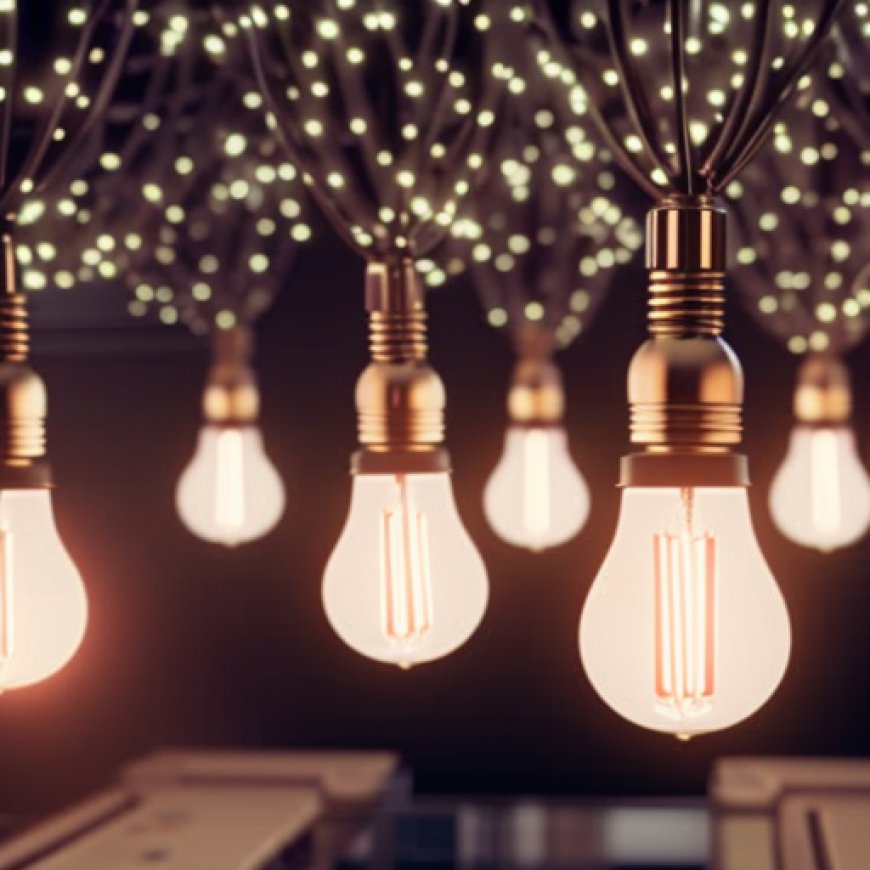DOE Finalizes Efficiency Standards for Lightbulbs to Save Americans Billions on Household Energy Bills – CleanTechnica
DOE Finalizes Efficiency Standards for Lightbulbs to Save Americans Billions on Household Energy Bills CleanTechnica


As Mandated by Congress, DOE is Updating General Service Lamps Standards—Bolstering Biden-Harris Administration’s Efforts to Strengthen Outdated Efficiency Standards to Save Americans ~$1 Trillion Over 30 Years
The U.S. Department of Energy (DOE) today finalized Congressionally-mandated energy efficiency standards for general service lamps (GSLs), which include the most common types of residential and commercial lightbulbs. These standards— which will go into effect in July of 2028 for newly produced bulbs—are expected to save American families $1.6 billion annually on household energy costs, significantly cut energy waste, and slash harmful greenhouse gas pollution. Over 30 years, DOE projects these updated standards will save Americans more than $27 billion on their utility bills and cut 70 million metric tons of dangerous carbon dioxide emissions—equivalent to the combined annual emissions of over 9 million homes. Today’s announcement represents the Biden-Harris Administration’s latest steps in delivering savings through appliance efficiency, as directed by Congress.
“Making common household appliances more efficient is one of the most effective ways to slash energy costs and cut harmful carbon emissions,” said U.S. Secretary of Energy Jennifer M. Granholm. “Under President Biden and as directed by Congress, DOE is following the lead of lightbulb manufacturers, helping American families flip the switch on massive energy savings through strengthened energy efficiency standards.”
DOE continues to carry out Congressional direction for energy savings that maintain reliability and performance across household appliances and commercial and industrial equipment. Today’s actions are part of a suite of energy efficiency standards advanced by the Biden-Harris Administration this term that DOE projects will together provide nearly $1 trillion in consumer savings over 30 years and save the average family at least $100 a year through lower utility bills. DOE also estimates that the full set of standards, once finalized, will cumulatively reduce greenhouse gas emissions by 2.5 billion metric tons or more—an amount roughly equivalent to the emissions of 18 million gas-powered cars, 22 coal-fired power plants, or 10.5 million homes over 30 years.
General Service Lamps
Today’s final rule will raise the efficiency level from 45 lumens per watt to more than 120 lumens per watt for the most common lightbulbs, in line with the ongoing transition toward more efficient and long-lasting LED bulbs that the lighting industry and consumers are already embracing. Manufacturer compliance with the efficiency standards being adopted today will be required from July 25, 2028, and will apply to newly produced or imported general service lamps—not affecting continued consumer use and purchase of bulbs already manufactured. The energy savings from these standards over 30 years of shipments is approximately 4 quadrillion British thermal units, which represents a savings of 17% relative to the status quo of lightbulb energy use.
DOE already implemented minimum lightbulb efficiency levels that were specifically directed by Congress in the bipartisan Energy Independence and Security Act of 2007, which set levels that cannot be met by energy-inefficient incandescent bulbs. Today’s standards—which reflect Congressional direction for DOE to regularly review efficiency standards to ensure consumers benefit from technological advances that provide savings—set efficiency levels that can be met by a broad variety of widely available LED bulbs but not by compact fluorescent bulbs (CFLs), which the market is already transitioning away from. LEDs provide longer lifespans and lower electricity usage, and unlike CFLs do not contain mercury.
Lowering Energy Costs for American Families and Businesses
For more information on cost-savings resources, consumers can utilize DOE’s Energy Savings Hub—an easy-to-use online resource to access the cost-saving benefits of President Biden’s Investing in America agenda. The website outlines clean energy tax credits and forthcoming rebates, helping people take control of their energy costs and have cleaner and more efficient options as a consumer—whether they’re looking to purchase an electric vehicle, update an appliance, or make their home safer and more comfortable. To learn how you can drastically cut your energy bills and keep money in your pocket, visit www.Energy.gov/Save.
DOE’s Building Technologies Office implements minimum energy conservation standards for more than 60 categories of appliances and equipment. To learn more, visit the Appliance and Equipment Standards Program homepage.
Latest CleanTechnica.TV Video
[embedded content]
News release from U.S. DOE.
SDGs, Targets, and Indicators
1. Which SDGs are addressed or connected to the issues highlighted in the article?
- SDG 7: Affordable and Clean Energy
- SDG 13: Climate Action
The article discusses the U.S. Department of Energy’s energy efficiency standards for general service lamps (lightbulbs), which aim to save energy, reduce greenhouse gas emissions, and cut energy costs for American families. These goals align with SDG 7, which focuses on ensuring access to affordable, reliable, sustainable, and modern energy for all. Additionally, the article mentions that the updated standards will help slash harmful greenhouse gas pollution, contributing to SDG 13, which aims to take urgent action to combat climate change and its impacts.
2. What specific targets under those SDGs can be identified based on the article’s content?
- Target 7.3: By 2030, double the global rate of improvement in energy efficiency
- Target 13.2: Integrate climate change measures into national policies, strategies, and planning
The article highlights the DOE’s efforts to update energy efficiency standards for lightbulbs, which will result in significant energy savings and reduced greenhouse gas emissions. These efforts contribute to Target 7.3 of SDG 7, which aims to improve energy efficiency globally. Additionally, by implementing these standards, the U.S. is integrating climate change measures into its policies and strategies, aligning with Target 13.2 of SDG 13.
3. Are there any indicators mentioned or implied in the article that can be used to measure progress towards the identified targets?
- Indicator 7.3.1: Energy intensity measured in terms of primary energy and GDP
- Indicator 13.2.1: Number of countries that have integrated climate change measures into national policies, strategies, and planning
The article does not explicitly mention specific indicators, but the progress towards Target 7.3 of SDG 7 can be measured using Indicator 7.3.1, which assesses energy intensity in terms of primary energy and GDP. This indicator helps track the rate of improvement in energy efficiency globally. Similarly, progress towards Target 13.2 of SDG 13 can be measured using Indicator 13.2.1, which counts the number of countries that have integrated climate change measures into their national policies, strategies, and planning.
SDGs, Targets, and Indicators
| SDGs | Targets | Indicators |
|---|---|---|
| SDG 7: Affordable and Clean Energy | Target 7.3: By 2030, double the global rate of improvement in energy efficiency | Indicator 7.3.1: Energy intensity measured in terms of primary energy and GDP |
| SDG 13: Climate Action | Target 13.2: Integrate climate change measures into national policies, strategies, and planning | Indicator 13.2.1: Number of countries that have integrated climate change measures into national policies, strategies, and planning |
Behold! This splendid article springs forth from the wellspring of knowledge, shaped by a wondrous proprietary AI technology that delved into a vast ocean of data, illuminating the path towards the Sustainable Development Goals. Remember that all rights are reserved by SDG Investors LLC, empowering us to champion progress together.
Source: cleantechnica.com

Join us, as fellow seekers of change, on a transformative journey at https://sdgtalks.ai/welcome, where you can become a member and actively contribute to shaping a brighter future.







